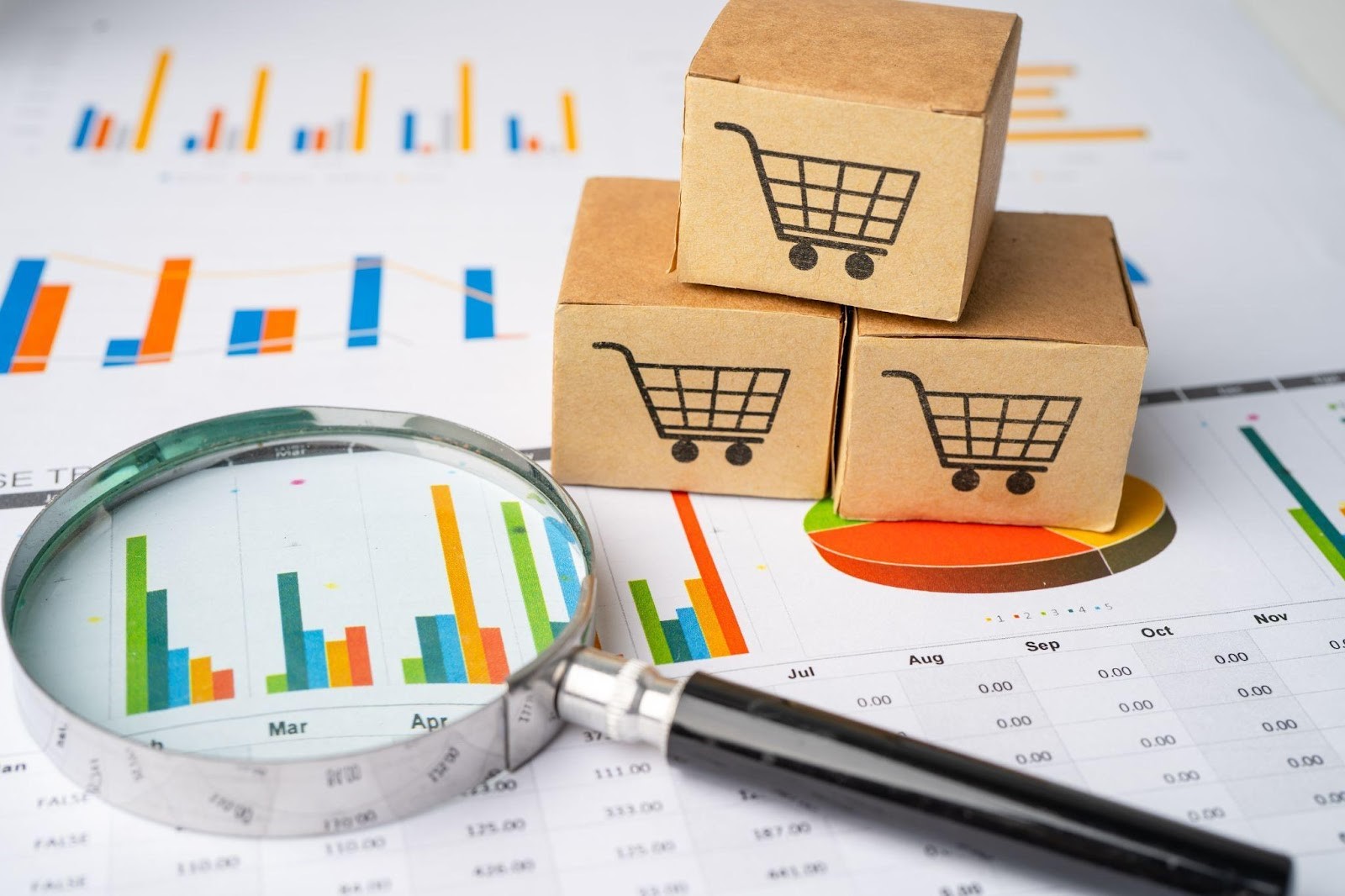Remember those futuristic city scenes we’ve seen in shows like Futurama, with flying taxis and cars that drive themselves. What if we tell you that they’re no longer imaginary dreams, they are the logistics trends to look for in the coming years
In today’s world, what customers want influences the latest trends, and these
trends shape the markets we have. They tell us what the transportation industry aims for and where it falls short.
In 2023, the transportation landscape is undergoing a remarkable transformation, with exciting trends on the horizon. Let’s explore what’s in store for logistics trends in the coming year.
Logistics Trends To Look For in 2023
Growth Marketing

What’s the Trend?: Logistics companies have started adopting growth marketing tactics such as conversational websites, social media marketing, local SEO, automated customer support, etc.
The average American now spends roughly seven hours each day online, making it imperative for transportation companies to adapt their growth marketing strategies to this digital evolution.
So, why is growth marketing so crucial for logistics companies today? To put it simply, in a world where connections are made with the click of a button, businesses thrive based on their online visibility, credibility, and their ability to provide instant information.
Logistics is no longer solely about the physical movement of goods; it’s also about ensuring that your brand is prominently displayed when a potential client searches for the “best logistics company near me” on a search engine.
It’s about crafting a brand narrative that fosters trust and showcases expertise. It’s about harnessing the power of online platforms not only to attract but also to engage and retain customers.
Let’s understand in detail how growth marketing has given a boost to the transportation business.
- Having a Multifunctional Website
Nowadays, transportation businesses have multifunctional websites, including online quotation facilities, orders and support options.
- Efficient Local SEO
In the transportation and shipping industry, location plays a critical role. Customers often seek out companies located in their own city or region.
For instance, someone planning to move from New York City is highly likely to initiate a Google search for ‘NYC Moving Company.’ When your business ranks within the top three to five results for such queries, you can expect a substantial increase in the potential leads.
- Social Media Marketing
Social media is a great way to interact with customers. Customers can readily access visuals of your on-ground services and testimonials from satisfied clients and stay updated on your latest offers and discounts through social media channels.
Additionally, transportation businesses actively run advertisements on platforms like Facebook and Instagram, further enhancing their brand visibility.
- Streamlined Follow-Ups and Automatic Invoice Reminders
Quotation follow-ups and automated reminders serve as prompts to encourage customers to make decisions and set your business apart from the competition. By implementing automated reminders, the sales team minimizes their involvement in this process, allowing them to concentrate on generating new business opportunities.
Green Logistics
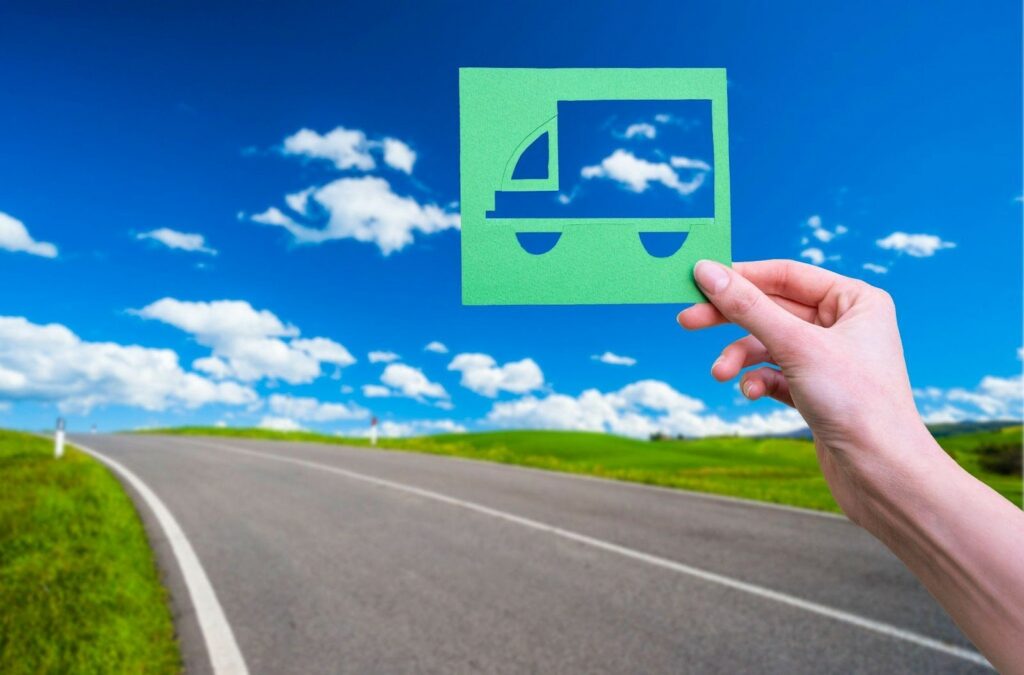
Why Green Logistics? Green logistics minimizes environmental impact through efficient transportation, eco-friendly vehicles, and sustainable storage. It optimizes transportation routes, adopts alternative fuel vehicles, and implements energy-efficient storage and handling practices.
Green logistics is a business concept that encourages companies to reduce environmental pollution while improving operational efficiency. Its primary goals include reducing emissions and conserving resources.
It also focuses on implementing effective waste management practices to protect the environment while ensuring customer satisfaction. In staying up-to-date with current logistics trends, businesses should consider adopting green logistics to minimize their ecological footprint.
What does green logistics aim to achieve?
- Reduce energy consumption
- Minimize waste generation
- Eliminate the use of harmful substances
A key component of green logistics is optimizing transportation routes. This process requires advanced transportation management systems that analyzes
- Traffic patterns
- Weather conditions,
- Weight and volume of goods.
By finding more efficient routes, the carbon footprint of transportation and fuel consumption can be significantly reduced. Another impactful way green logistics contributes to environmental conservation is by adopting electric and alternative fuel vehicles.
Fossil fuels are major contributors to air and water pollution. Transportation vehicles release gases that are harmful to the environment. Making a shift to fuels like biodiesel, electric, and hydrogen-powered vehicles can help cut down the damage.
Additionally, environmentally friendly practices in storage and handling operations include energy-efficient facilities and recycling initiatives. These practices, like reducing waste and using eco-friendly packaging, further contribute to the cause.
Lastly, green logistics involves educating and engaging all stakeholders, from shareholders and suppliers to customers and employees. This ensures that companies fully comprehend and embrace green logistics, making sustainability an integral part of their corporate culture.
Automated Vehicles

What’s the Update? Autonomous transportation systems, equipped with advanced technologies and AI algorithms, enhance road safety and reduce pollution. Self-driving trucks improve delivery efficiency by operating continuously over long distances without breaks.
Transportation vehicles are the contributors to pollution and traffic congestion, particularly in large cities. However, the adoption of autonomous transportation systems can address this problem to a greater extent. How? Let’s read.
Self-driving vehicles employ an array of advanced technologies, including sensors, LIDAR, and automated safety features, to autonomously navigate roads. These vehicles use camera technology with remarkable precision to interpret road signs.
They employ AI algorithms to identify objects on the road, enabling them to make informed decisions about their surroundings thus enhancing road safety.
Many autonomous vehicles run on hybrid and electric engines. Electric vehicles, in particular, offer significant advantages because they don’t emit harmful pollutants such as nitrogen oxides into the atmosphere.
Apart from electric, many transportation industries have now shifted to AI-driven vehicles.
An AI-enabled vehicle has the power to self-learn from various instances like how truck drivers respond to unusual driving scenarios. Slowly, AI-enabled vehicles are outperforming human drivers in terms of their driving ability.
Example: Self-driving trucks are now transporting goods across long distances. These vehicles can keep going for a long time without breaks, making deliveries faster and more efficient.
MaaS (Mobility as a Service) Becomes Popular

What’s the buzz around it? MaaS’s technology-driven approach aims to enhance travel experiences, reduce congestion, and benefit both businesses and users.
Mobility as a Service (MaaS) is the “Combining different types of transportation into one convenient service accessible on demand.”
As MaaS gains prominence in the transportation sector, it is anticipated that MaaS revenues will surge to $1 trillion by 2030.
A fundamental principle of MaaS is the integration of diverse transportation modes, prioritizing the customer’s destination over the specific mode of transportation.
MaaS also aims to streamline the provision of demand information, transport services, and payment processes through a unified platform.
In cities, this results in improved access to real-time travel information, allowing you to make informed decisions about your transportation options, all conveniently managed through a single payment platform.
What is making more and more people use MaaS?
- Existing transportation infrastructure struggles to adequately serve current city dwellers. Furthermore, traffic congestion contributes to pollution, adversely affecting health and the environment.
Solution:
- The solution to this lies in leveraging technology to measure travel time, speed, and convenience across all transportation modes. This approach focuses on enhancing travel efficiency rather than encouraging more driving by expanding road networks.
- In simpler terms, MaaS emerges as a technological solution that promotes investments in infrastructure and technology that optimize transit usage.
- Flexible and data-driven transportation systems like MaaS have the potential to alleviate traffic congestion and environmental concerns while delivering superior value propositions for businesses and users.
Cloud-Based Systems

What’s the hype? Cloud-based systems revolutionize transportation by offering flexibility, cost savings, and streamlined processes, benefiting fleet management and industry capabilities.
Cloud-based systems have revolutionized the transportation industry. Cloud platforms follow a software-as-a-service (SaaS) model, offering companies significant flexibility and access to innovative digital tools.
This shift toward cloud-based solutions not only enhances profitability but also outperforms traditional on-premise systems. Furthermore, implementing cloud integration is a relatively straightforward process, as these systems can seamlessly integrate into existing workflows.
The advantages they offer encompass secure and efficient data storage and transfer, streamlined internal processes, and enhanced financial oversight. Fleet managers find these advantages invaluable for simplifying administrative and management tasks. This leads to time and cost savings, enhanced brand reputation, and increased profitability.
Cloud-based systems offer a high degree of flexibility and a wide range of capabilities, making them highly valuable for both logistics and transportation.
Advanced Transportation Analytics
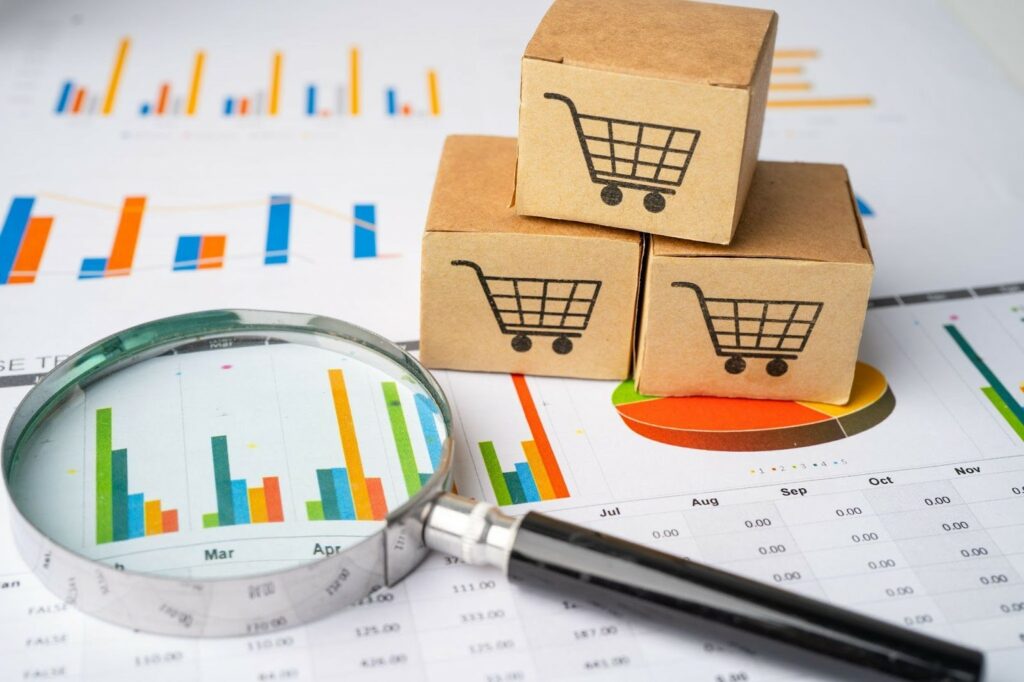
Data Analytics in Transportation! Why? Transportation data analytics, from collection to real-time analysis, optimizes travel efficiency and cost-effectiveness for businesses and individuals, offering multifaceted benefits.
Transportation data analytics has the potential to enhance vehicle performance, cut down on expenses, streamline processes, formulate strategies, optimize routes and schedules, and proactively detect and address issues, among other benefits.
The utilization of transportation analytics has the capacity to enhance the efficiency and cost-effectiveness of both commercial and personal travel.
By using analytics, decision-makers use complex transaction data to improve how they manage goods and services in areas like shipping, warehousing, and transportation.
Let’s understand how the transportation industry makes use of advanced transportation analytics:
- Data Collection
The process commences with gathering data from diverse sources within the transportation network, encompassing inputs from traffic sensors, vehicle GPS systems, mobile applications, public transit systems, weather reports, and other relevant data streams.
- Processing the Data
Once the data is collected, it undergoes a process that prepares it for analysis. This step involves removing errors, inconsistencies, and duplications from the data.
- Descriptive Analytics
This initial phase involves summarizing historical data to understand what has happened in the past. It provides insights into trends, patterns, and historical performance.
Example, it can analyze historical traffic congestion patterns in a city.
- Predictive Analytics
Advanced Transportation Analytics utilizes predictive modeling techniques to forecast future events and logistics trends.
It can predict traffic congestion for specific routes or times based on historical data and current conditions.
- Prescriptive Analytics
This step goes beyond predicting future events. It recommends specific actions or strategies to optimize transportation systems.
Example, it can suggest alternate routes to reduce congestion or recommend adjustments to public transportation schedules.
- Real-Time Analytics
Advanced Transportation Analytics often includes real-time analysis, which involves processing and analyzing data as it is generated. This is crucial for managing traffic in real time, optimizing logistics, and responding to emergencies promptly.
Advanced analytics helps make informed decisions that improve the overall transportation experience for individuals and businesses.
Compliance with Regulations
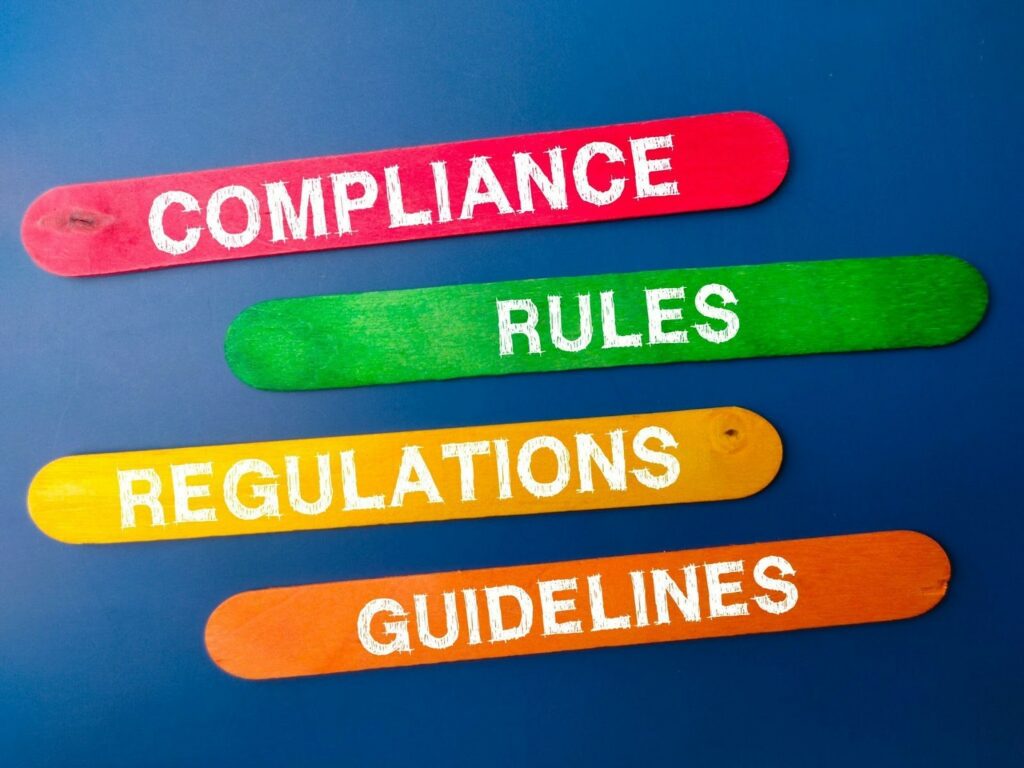
Is this a trend? The auto transport industry’s growing focus on regulatory compliance, driven by environmental, safety, and urban mobility concerns, is crucial for legal and environmental responsibility.
Another emerging trend in the auto transport industry is the growing focus on regulatory compliance. It’s crucial to recognize this as a necessity rather than just a passing trend.
Governments at various levels—federal, state, and local—are continuously enacting, revising, or revoking laws and regulations that affect the industry.
Some recent examples of regulatory changes involve the implementation of electronic logbooks, enhanced safety protocols, and regulations concerning overtime.
Is following the regulations laid out by the government that important? Yes, it is. Why? Let’s read.
- Growing environmental concerns lead to stricter emissions rules for transportation. This means adopting cleaner tech like electric and hydrogen vehicles to meet emission standards.
- As technology in transportation grows, data privacy rules gain relevance. Complying with data protection laws is vital, particularly regarding passenger, payment, and location data in apps and connected vehicles.
- Autonomous vehicle development will face strict safety regulations, requiring proof of road-safe system operation.
- Many cities are implementing rules to manage urban mobility, like congestion pricing, access limits, and promoting eco-friendly modes. Urban businesses must adhere to these regulations.
Visibility and GPS Anti-Theft

What’s the trend? A leading trend in transportation is the adoption of tracking technologies, including GPS and anti-theft systems, by E-Commerce, retail, and logistics companies for enhanced traceability, security, and real-time monitoring of assets and cargo, aligning with industry demands.
One of the leading logistics trends shaping the transportation industry this year is the widespread adoption and customization of tracking technologies to enhance traceability.
This trend is particularly prominent among E-Commerce, retail, and logistics companies, which are placing a growing emphasis on achieving greater visibility. An example of this is the utilization of Anti-Theft GPS systems to monitor the whereabouts of entire fleets and individual cargo items during transit.
Let’s see how this trend is shaping the transportation industry:
- With the advancement of GPS technology and telematics, transportation companies can track the real-time location and movement of their vehicles and assets.
- Visibility tools enable companies to monitor the condition and usage of valuable assets such as trailers, containers, and equipment.
- GPS anti-theft systems not only track the location of stolen vehicles but also allow for remote immobilization, making it more challenging for thieves to escape with the stolen property.
- In the transportation of goods, especially high-value or sensitive cargo, GPS anti-theft devices can provide continuous monitoring. If a shipment deviates from its planned route or experiences unexpected stops, the system can alert authorities.
Visibility and GPS anti-theft technologies enhance efficiency, security, and compliance while aligning with the evolving logistics trends and demands of the transportation landscape.
Block Chain In Transportation

Block-chain here too? Blockchain adoption is surging in logistics, revolutionizing supply chain transparency and enhancing visibility, offering secure, interconnected systems that benefit the transportation industry and improve the customer experience.
In today’s business landscape, there’s a growing adoption of blockchain technology within supply chain strategies, and its significance in logistics trends cannot be overstated.
The transportation industry is undergoing a fundamental shift towards transparent, interconnected, and secure supply chain frameworks, and blockchain perfectly ticks all the boxes.
Blockchain serves as a decentralized encryption technology designed for the secure storage and tracking of ownership and transaction records. It’s a transformative technological advancement in logistics and transportation, poised to revolutionize mobility.
Its impact is notably seen in the improvement of visibility by reducing bottlenecks and enhancing the overall customer experience.
What sets blockchain apart is its ability to seamlessly connect all elements of the supply chain onto a unified platform, marking a pivotal advancement in supply chain management.
Last-Mile Delivery Demands
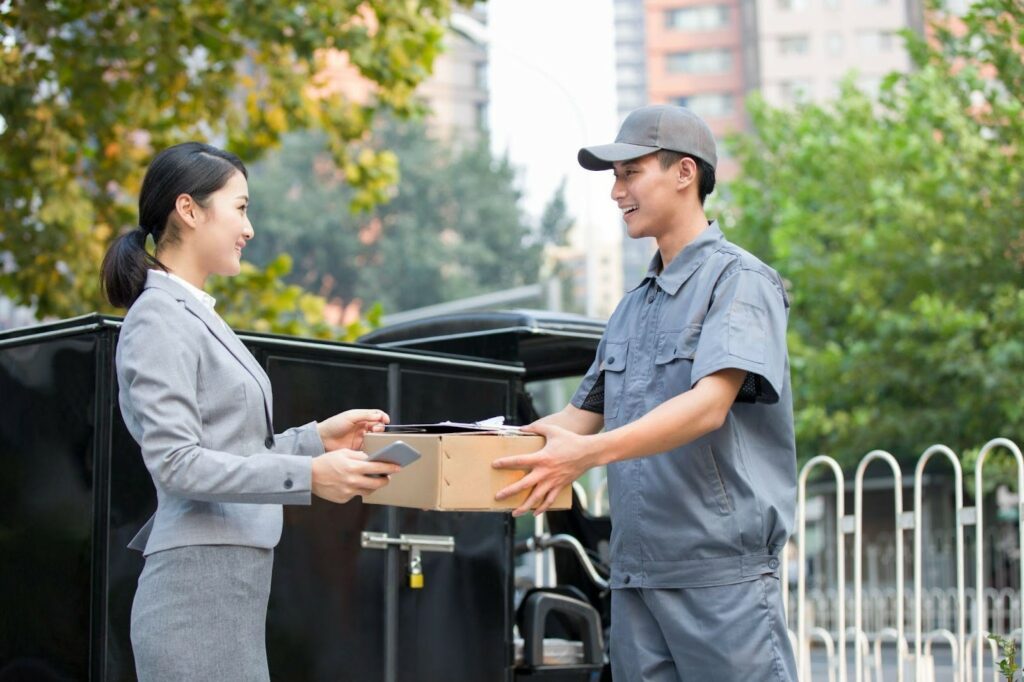
Interesting! What is it? Last-mile delivery is essential for meeting e-commerce demands, with startups developing efficient solutions.
Last-mile delivery, often referred to as last-mile logistics, encompasses all the operations necessary to transport goods to the final consumer. Thanks to the widespread usage of e-commerce platforms, delivery services have been continuously enhanced.
It plays a pivotal role in meeting the growing demands of e-commerce and online shopping, where customers expect fast, convenient, and reliable delivery options.
Innovative startups are actively developing new and efficient last-mile delivery solutions with the goal of swiftly delivering items to their intended recipients.
Last-mile delivery is characterized by various challenges, including the need for speed, sustainability, and efficiency, particularly in densely populated urban areas. To address these challenges, transportation companies are exploring innovative solutions such as electric vehicles, autonomous delivery systems, and data-driven route optimization.
Additionally, the COVID-19 pandemic has accelerated logistics trends toward contactless deliveries and enhanced customer experiences, making last-mile delivery a critical focus in the evolving landscape of transportation and logistics.
Drone and Robot Delivery
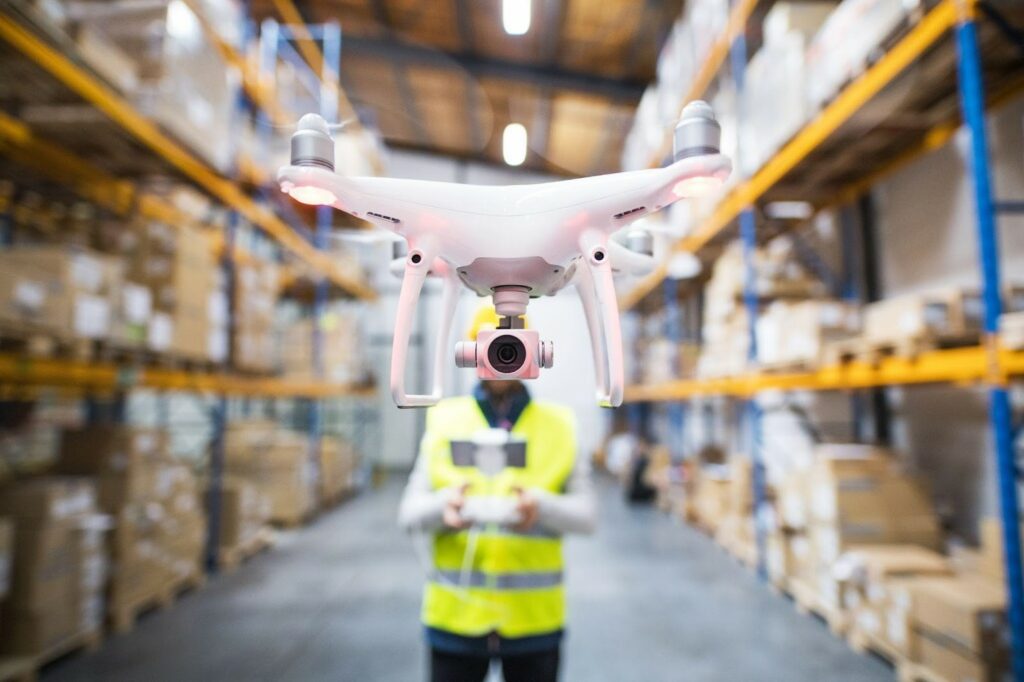
What’s the hot topic? Drone and robot delivery systems are transforming last-mile logistics by enhancing speed and efficiency. Drones excel in remote areas and reduce emissions, while robots navigate urban pathways independently, reducing traffic congestion.
Drone and robot delivery systems are innovative technologies that are revolutionizing the transportation and logistics industry. These systems are designed to enhance the efficiency, speed, and precision of last-mile deliveries.
Advantages of Drones in Delivering Goods
- Drones are particularly advantageous in scenarios where traditional ground-based vehicles may face challenges, such as congested urban areas or remote and hard-to-reach locations.
- Additionally, they can access areas that are difficult to reach by road, making them ideal for remote or rural locations.
- Electric drones produce fewer emissions than traditional delivery vehicles, thus reducing the environmental impact.
Robotic delivery systems typically involve ground-based autonomous or semi-autonomous vehicles that can navigate sidewalks and roads to deliver goods. These robots come in various shapes and sizes, from small sidewalk robots designed for urban deliveries to larger autonomous vehicles capable of transporting larger cargo loads.
Advantages of Robots in Delivery
- Robot delivery systems are designed to navigate pedestrian pathways, making them well-suited for urban environments.
- Robots can operate independently of road congestion, helping reduce traffic congestion in cities.
Final Words
In a nutshell, the transportation industry in 2023 is in for some significant changes. Technology is at the forefront, reshaping our systems to be smarter and more environmentally friendly.
From self-driving vehicles to better data analytics and secure blockchain systems, it’s all about improving how we get around. These logistics trends are paving the way for a future where transportation is not only more interconnected and accessible but also deeply committed to sustainability.
Stay ahead of the curve, embrace evolving logistics trends, and watch your logistics business achieve new levels of visibility and success. Get in touch with us today our team of experts is all set to guide you.
What new logistics trends do you expect to see in 2024?

